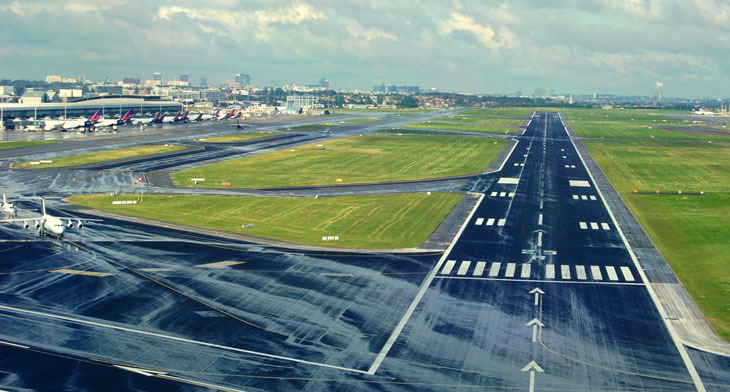


Passenger traffic in Europe’s airport network decreased by -36.7% in October, compared to the same period pre-pandemic (2019) – an improvement on September’s report which showed -42.9%, according to Airports Council International (ACI) Europe.
The European airport trade body’s October air traffic report also highlighted that the lower passenger traffic losses came from airports in the EU+ area (-41.2% in October, up from -48.1% in September). Although airports in the non-EU+ area still kept outperforming in October (-17.4%), they didn’t see passenger traffic improving at the same pace when compared to September (-20.8%)
These improvements were all led by international (mostly intra-European) passenger traffic (-42.4% in October, up from -50.2% in September). Conversely, domestic passenger traffic slightly decreased during the month (-18.1%) compared to the previous one (-17.9%).
“The significant progress made on vaccinations translated into an improved performance for many airports in October,@ said Olivier Jankovec, DG of ACI Europe.
“This is good news – and the reopening of the transatlantic market in November only added to the momentum. But at the same time, this has not been a uniform trend. This autumn has shown that the patterns of our traffic recovery vary significantly from country to country and even between individual airports. Most of all, the emergence of the Omicron variant over the past weeks has shown that nothing can be taken for granted – and that our recovery path remains fragile. The reinstatement of travel bans is not supported by the WHO. We urgently need such measures to be reconsidered, and to make sure we finally learn to live with the virus,” he continued.
The uneven recovery pace of passenger traffic showed that airports in Greece, Cyprus, Portugal and Spain posted the lowest passenger traffic decreases, as they benefitted from significant leisure demand towards the end of the summer season facilitated by much eased travel regimes.
Meanwhile, airports in destinations including Finland, the Czech Republic, the UK and Sweden posted the worst performance not just within the EU+ area but across the whole of Europe, along with Israel. This largely reflected continued or reimposed travel restrictions and lockdowns.
Outside the EU+ area, the best performance came from airports in Albania, Kosovo, Bosnia and Herzegovina, Russia and Uzbekistan.
The report also underlined that the almost exclusive reliance of small regional airports on domestic and intra-European traffic allowed them to tap into significant levels of pent-up demand, achieving lower traffic losses in October. Airports with less than 5 million passengers per annum saw passenger traffic decreasing by -22.8%, less than half the decrease of their larger counterparts.
A small number of insular airports serving popular tourism destinations managed to fully recover or even exceed their pre-pandemic passenger traffic levels: Sochi, Calvi, Kerkira, Ajaccio, Chania, Rhodes, Paphos and Funchal. However, there was overall extreme variance in the performance of smaller regional airports as airlines remained risk averse and as worsening epidemiological situations and travel restrictions took a heavy toll on most airports located in the UK and the central/ Eastern part of the EU.
Similarly, the reliance of secondary airports serving capitals or economic centres on intra-European traffic and low-cost carriers also proved to be beneficial. This was shown to be the case for Rome Ciampino compared to Rome-Fiumicino, which was hit by the closure of Alitalia. This was also the case for Paris Orly and Paris-Beauvais compared to Paris-CDG, Bergamo compared to Milan Malpensa and Charleroi compared to Brussels.





